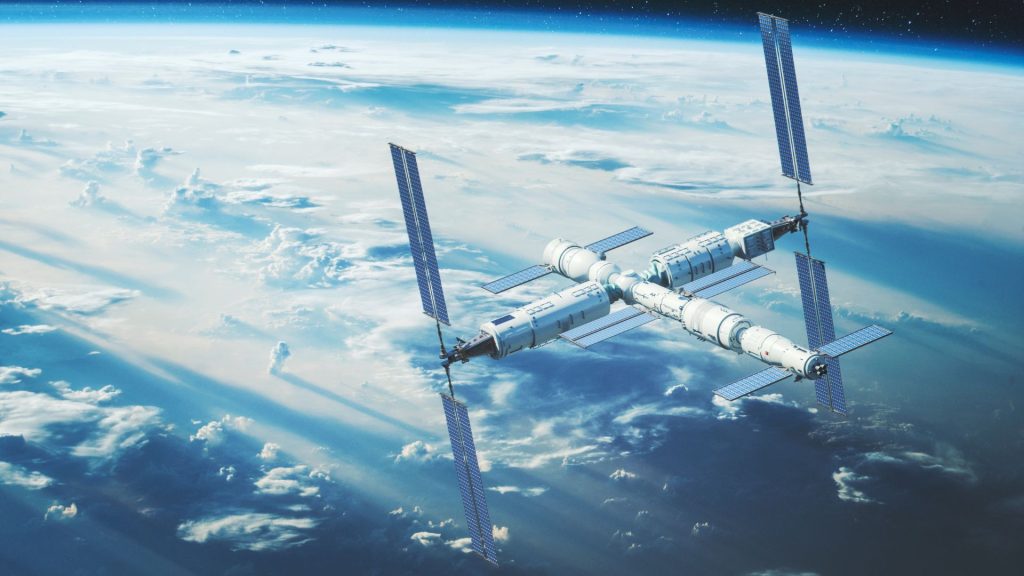China generates oxygen and rocket fuel in-orbit for first time – Interesting Engineering

For the first time, Chinese astronauts have reportedly demonstrated artificial photosynthesis technology in orbit.20 hours agoa day agoa day agoa day ago2 days ago2 days ago2 days ago2 days ago2 days ago2 days ago22 minutes ago2 hours ago2 hours ago3 hours ago3 hours ago3 hours ago4 hours ago4 hours ago4 hours ago4 hours agoMrigakshi Dixit An illustration of Chinese Tiangong Space Station.iStock
For the first time, Chinese astronauts have reportedly demonstrated artificial photosynthesis technology in orbit.They have successfully conducted experiments that mimic photosynthesis, converting carbon dioxide and water into oxygen and rocket fuel ingredients. This development is a major step towards long-term space exploration, as it demonstrates the potential for producing essential resources in space.The South China Morning Post (SCMP) reported that the experiments were performed by the current Shenzhou-19 crew aboard the Tiangong space station. Oxygen is essential for human survival. Further, transporting sufficient oxygen for long-duration space missions is highly expensive and logistically complex.For these reasons, China has been carrying out experiments to produce oxygen onsite in space for long-term human exploration and habitation. Chinese researchers initiated their investigation into “extraterrestrial artificial photosynthesis” in the year 2015.As per the China Manned Space (CMS), a series of 12 experiments were carried out within a drawer-shaped apparatus in orbit. These experiments employed semiconductor catalysts to transform carbon dioxide and water into oxygen and ethylene. Ethylene, a hydrocarbon, has the potential to serve as a propellant for spacecraft.“This technology mimics the natural photosynthesis process of green plants through engineered physical and chemical methods, utilising carbon dioxide resources in confined spaces or extraterrestrial atmospheres to produce oxygen and carbon-based fuels,” China’s state broadcaster CCTV reported.“The work is expected to provide critical technical support for human survival and exploration in outer space,” it further added.This novel technology exhibits efficient operation at ambient temperature and pressure, in stark contrast to conventional methods that necessitate extreme conditions.As per SCMP, this technology offers versatility in product output. The device possesses a design that facilitates in-orbit upgrades, enabling scientific investigation of diverse catalysts and reactions.Through catalyst manipulation, the technology exhibits the capability to produce a diverse range of substances, including methane, ethylene (for propulsion applications), and formic acid (a precursor for sugar synthesis). Interestingly, all these processes require energy consumption, which makes the tech essential for space usage. This achievement is valuable for long-term space exploration, enabling self-sufficiency and supporting missions like a crewed moon landing by 2030.Like the US, China also has an ambitious plan to land astronauts on the lunar surface before the year 2030.This mission will require significant technological advancements in all areas, including spacecraft design, propulsion systems, life support systems, and robotics.This is not it. China has unveiled bold plans to build an International Lunar Research Station (ILRS). This project is being led by the China National Space Administration (CNSA) in collaboration with Roscosmos (the Russian space agency).The construction of ILRS — likely between 2028 to 2035 — will involve significant human presence on the Moon.As the lunar environment lacks breathable air, maintaining a human presence on the Moon requires a robust life support system. Therefore, this development could help China in achieving its key goals in the future. Stay up-to-date on engineering, tech, space, and science news with The Blueprint.By clicking sign up, you confirm that you accept this site’s Terms of Use and Privacy PolicyMrigakshi Dixit Mrigakshi is a science journalist who enjoys writing about space exploration, biology, and technological innovations. Her work has been featured in well-known publications including Nature India, Supercluster, The Weather Channel and Astronomy magazine. If you have pitches in mind, please do not hesitate to email her.a day agoa day agoa day agoa day agoPremiumIE PROFollow
Source: https://interestingengineering.com/space/china-makes-resources-in-orbit-for-space-travel





